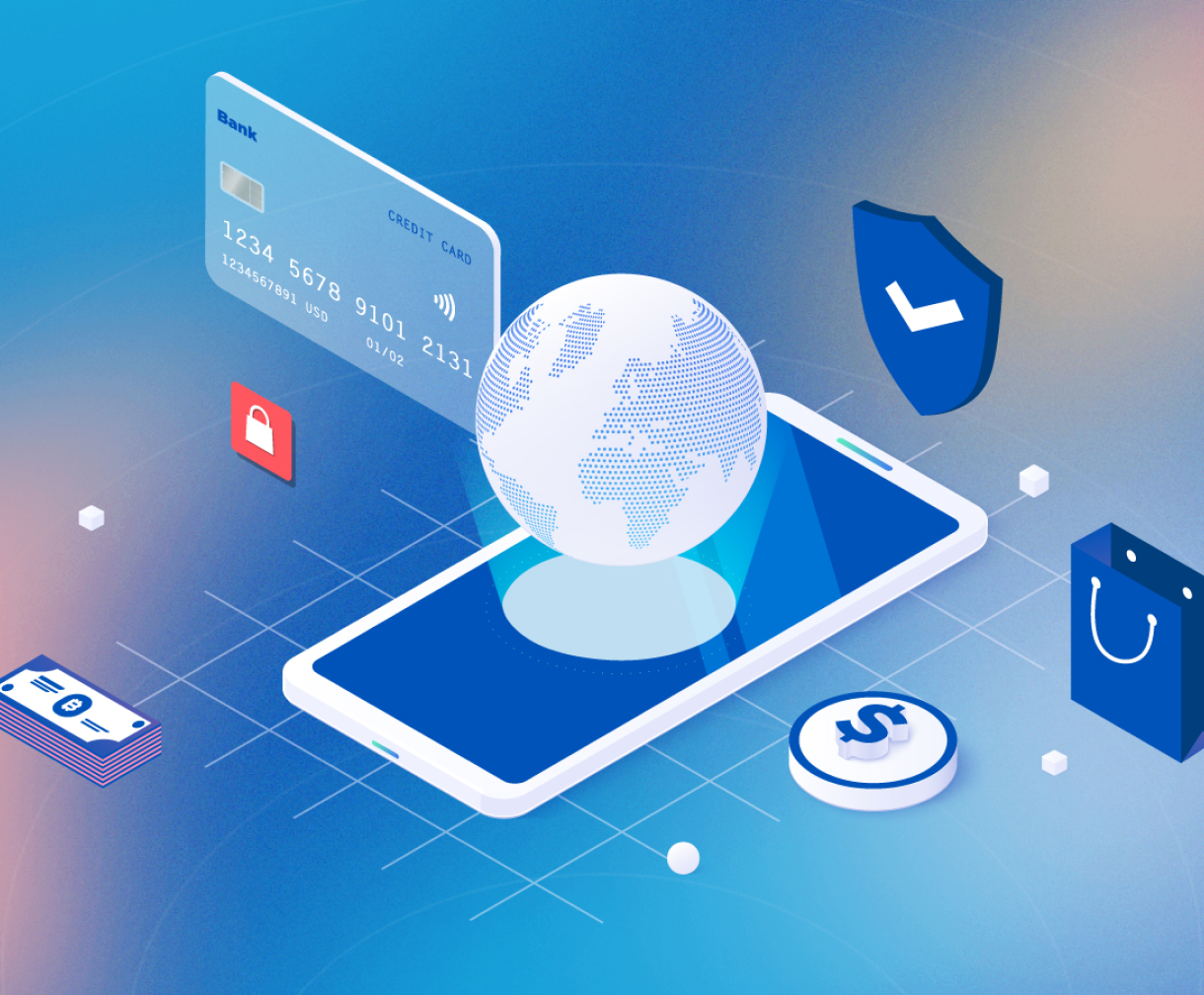How to Find Gaps in your Payment Stack? | inai
People are shifting to online mediums for shopping at a dramatically fast rate. So much so that e-Commerce sales are expected to reach $6.5 by 2023, according to Statista. While this may sound like great news for eCommerce business owners, it also brings several challenges.

For instance, as customers shift online, they're inclining more toward newer payment methods such as BNPL (buy-now-pay-later), wallets, etc. And because of ever-reducing patience, customers also want a frictionless, smooth, and seamless checkout experience. Unfortunately, this is something your payment stack might not be able to handle, which can lead to a poor customer experience and higher churn.
Solution? Well, that's when Payment Gap Analysis comes into the picture. This blog talks about how you can analyze your payment stack, find gaps or loopholes, mitigate them and thus offer your customers a seamless, convenient, and fast checkout experience.
What is a Payment Stack?
A payment stack is a set of tools and technologies you need to receive or accept payments from your customers. Everything that comes within a payment lifecycle, like where the payment is coming from, what type of payment it is, where it'll go for authentication, processing, and finally, the settlement, comes under the payment stack.
Why Analyze your Payment Stack?
Here's why:
- To find gaps or anomalies in your payment system.
- To be able to meet the challenges of the future.
- To ensure a seamless, friction-free, and smooth checkout experience for customers.
How to Analyze Gaps in your Payment Stacks?
To analyze gaps in your payment stack, you need to focus on three main aspects, payments, technology, and competition. To make it easy, we've included questions in each category.
Just answer all the questions with utmost honesty, and you'll get to know where the gap lies if any.
Examine your Payments
%20(1).png)
Here we'll consider how you as a business are performing in the market. Better market penetration and development means lesser problems.
1) What Is Your Overall Conversion Rate?
Conversion rate is the percentage/number of visitors purchasing from your website. For instance, if 10 out of 100 visitors make a purchase, the overall conversion rate is 10%. While the industry standard says a 2-5% conversion rate is reasonable, it can vary from organization to organization. If you think the overall conversion rate you're achieving is satisfactory, it's fine. And if not, maybe your payment checkouts needs a relook.
2) What is your Cart Abandonment Rate?
Cart abandonment tells you the percentage of people who added products to their carts but did not make a purchase. The standard cart abandonment rate is 69.57%. Anything more than that indicates a problem with your payment system. While there are several reasons for cart abandonment, most are related to payments, such as issues related to payment security, too many fees, or an ambiguous checkout process.
3) At Which Point Do You See This Highest Abandonment Rate?
That is where you can find the exact reason behind cart abandonment. For example, is it the payments page, shipping details page, creating an account, or viewing cart page where the abandonment rate is the highest?
4) What Payment Methods Are Most Popular With Your Target Audience?
Does your audience use credit/debit cards, POS machines, Venmo, ACH, and Digital wallets such as PayPal or Apple Pay? This is to determine what your target audience prefers as their mode of Payment. And then, you can cross-check as to whether you're offering those payment methods or not. Then, you can integrate newer payment gateways to cater to those needs if you aren't already.
5) Do You Offer All Local Payment Methods?
Offering local payment methods to your customers helps ease the process of checkout. If multiple options are available, then they can choose a suitable option at their convenience. However, if you aren't offering all the local payment methods, that could be the gap because people are abandoning carts.
Technology Understanding
%20(1).png)
Here we'll consider what level of technology you are using within your payment stack.
1) How Many Integrations Are in Your Current Tech Stack?
Integrations here mean the applications or services your payment stack is connected to. In this case, more is better as it offers diversified options to your customers.
2) What Are Your Current Decline Rates?
Decline rates indicate the percentage of transactions declined by the payment processor, the gateway, or the bank, usually because they anticipated a fraud or an internal issue. While sometimes, declines help prevent frauds, mostly, they're false. The bank/processor/gateway falsely tags a payment as fraudulent and declines the transaction. And this impacts the merchant's reputation and revenue and also ruins the customer experience, which results in customers never buying from that customer again.
On average, 4-15% of payments are declined in B2B businesses. And it would help if you focused on staying on the lower end of this percentage. To do that, you need to check if the payment gateway is inefficient or if the fraud filter leads to unnecessary declines. Once you know what's causing the problem, you can deal with it and reduce false declines. And this will eventually help you reduce your overall decline rate.
3) How Many Payment Vendor Relationships Are You Managing?
Payment vendors include payment gateways, invoicing, and payment reconciliation service providers to subscription management service providers. The more you have, the harder it is to analyze payment gaps, as numerous moving parts are involved.
4) Do You Have Reconciliation in Place?
When it comes to data entry, human errors are pretty frequent. And if your business receives good sales and handles tons of data, errors are more likely to happen. However, payment reconciliation can help. Payment reconciliation is the process of comparing the payments that came in or went out with your bank statements. It helps identify errors and ensure that all expenses are displayed correctly on the bank statement.
In case a third party (hacker) is trying to sneak into your bank account, with reconciliation, you can find suspicious transactions made by him right away. Furthermore, you get to see the overall cash flow, total expenses, and profits which you can use to plan for the future. So, if you have a reconciliation process in place, incredible. However, if you don't, get one now.
5) Do You Have Payment Routing in Place?
When your business operates at a global level, you need to integrate different payment gateways to cater to the needs of all the customers. But what will ensure that the customer from Indonesia gets his desired local payment gateway with the best success rate and least fee? That's where payment routing comes in. Payment routing is the process of choosing and displaying the ideal payment gateway and method to the customer based on several factors, including fee, success rate, user interface, etc.
Having payment routing in place can help you create a seamless checkout experience for your customers, which is excellent for your brand reputation. So, reach out to a payment routing expert if you don't have routing enabled.
6) How Do You Manage API Changes on the Payment Gateways?
Your developers use APIs to send and receive data from a payment gateway. However, the payment gateway introduces regular updates in the API to fix security loopholes, integrate newer functionalities, etc. And these changes must be integrated into your system so your customers can use the latest technology.
How are you managing this in your organization? If you have a dedicated team that manages all the updates while ensuring security and creating a restore point, you're good to go if things go south. However, if there isn't a specialized team that manages the changes in API, your customers could be using the obsolete API, which lacks functionality and perhaps has bugs. So, make sure that a team of dedicated experts handles API changes on payment gateways.
7) Do You Have Failover Logic in Place?
Failover is a secondary or backup system that takes charge when the existing or central system malfunctions or stops working. It helps you reduce the payment decline and churn rates and maintain a stable checkout experience for your customers. Let's suppose a customer is making a payment on your platform and your default payment gateway fails for any reason. Now, if there's a failover logic in place, the secondary system will get activated within seconds allowing the customers to complete the transaction without a hiccup.
However, if the failover logic is missing, the system failure won't allow the customer to make the payment. And this will lead to a terrible checkout experience, poor brand reputation, and a higher churn rate.
8) Is Fraud Management in Place?
With the rise in the adoption of online technologies, cyber frauds are on the rise too. Therefore, you must have a fraud management system in your payment stack that protects your business and the customers from being exploited. An ideal fraud management system should be able to flag fraudulent transactions and mitigate the issue immediately. Also, there must be a reliable customer support system that helps the customers with a solution whenever such fraud happens.
You could risk your business and customers' sensitive data if you don't have an active fraud management system. So get one now.
9) Do You Use a Tokenization Vault?
Any digital business that accepts customer payments deals with sensitive information such as bank details, credit/debit card information, wallet information, etc. And this information can be exploited by hackers to steal money from innocent customers. Fortunately, a system exists to protect this data, known as a tokenization vault.
A vault is usually a 3rd party secret server where all a company's sensitive information is held securely. And in exchange for the sensitive information, the company is handed over tokens that aren't sensitive and can be stored on the company's server. This way, even if someone gets access to the token, it won't be of any use as the info it has is not sensitive. In a nutshell, not having a tokenization vault is a huge gap in your payment stack as it risks your and your customer's sensitive information. Therefore, make sure there's an effective tokenization vault system in place.
Competitor Analysis
%20(1).png)
Competitor analysis, as the name tells, helps analyze how you perform compared to your competitors.
1. What Payment Methods Are Your Competitors Offering?
Suppose you have a competitor, X, who operates in the same domain and across the same locations. You need to find out what payment methods he offers, such as credit/debit cards, wallets, internet banking, buy now, pay later, etc. Once you have the information, you need to compare the same with what you're offering. If your competitor is offering equal or fewer payment methods than you, it's fine. However, if he's offering more, there's a probability that your customers will switch to your competitor for business in the near future.
However, you can deal with this by opting for a diverse payment gateway or a payment aggregator like inai that clubs different payment gateways and payment methods and makes them available to your customers.
Pro Tip: Always compare your business with a competitor, who is performing better. This will help you improve further.
2. What Payment Gateways Have Your Competitors Integrated With?
If your competitors are performing well, they're probably using more reliable payment systems or payment gateways. So, you need to find what payment gateways they use and compare them with what you use for managing payments. P.S. You can use payment success rate, customer support, service fee, etc., for comparison.
If you find that your competitor is using a better set of payment gateways, you should switch.
3. Do They Have an In-House or Payment Integration Solution in Place?
Is your competitor using an in-house or 3rd party payment integration solution to automate payment management? In-house solutions are usually costly to build compared to subscribing to a third-party service from a 3rd party platform. Also, 3rd party platforms are generally more robust and up-to-date. You can find what kind of solutions they have and compare it with what you've implemented in your company.
How Can inai Help?
While the questions can help you find gaps in your payment stack, the process is pretty long. You need to spend quite a lot of time and resources to pull out all the details to answer the questions above. And that entire process can be tiring. Is there an alternative? Yes. You can integrate a payment aggregator that helps you find and mitigate gaps in your payment stack. And that's when inai comes into the picture.
inai is a payment unification platform that can help you perform a detailed gap analysis, determine the gaps or loopholes and fix them. For instance, if, after the gap analysis, it's found that you don't have a payment routing system, a reliable payment gateway, or multiple payment methods, inai has your back.
Experts at inai can help you integrate 30+ payment gateways and hundreds of payment methods with payment routing enabled. So, if a payment gateway isn't effective for a particular transaction, the system will automatically shift to a more relevant payment gateway based on the predefined settings. If you want to automate your payment stack gap analysis, fix all the payment gaps, and ensure a seamless, friction-free checkout experience for your customers, reach out to inai.







Let’s get started








.png?width=123&height=71&name=inai%20logo%20-%20dark%201(1).png)